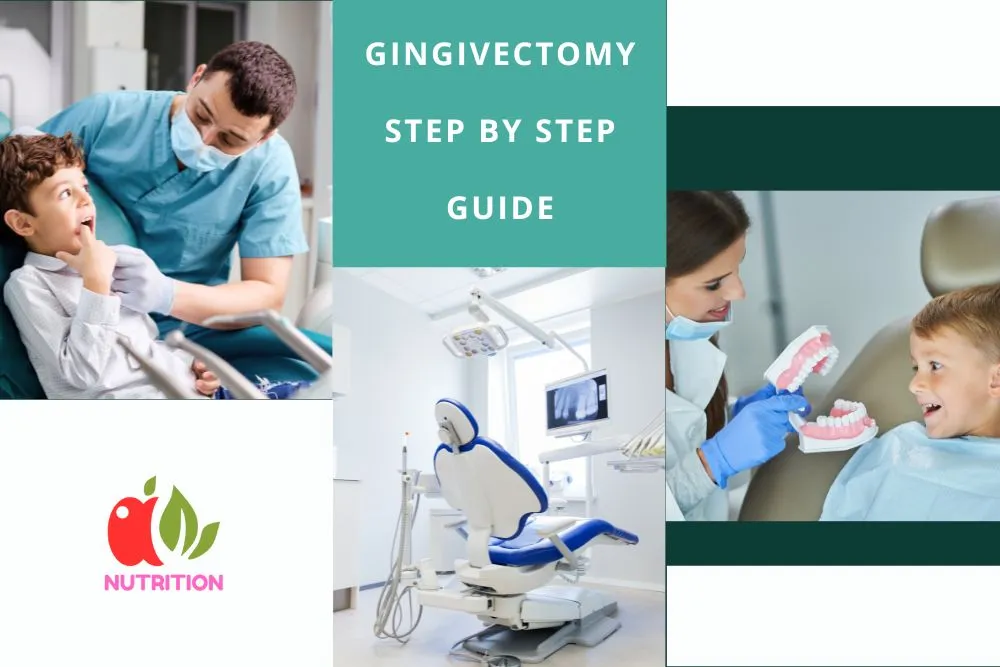Are you worried about your gum tissue disease? Then gingivictomy is the best surgical treatment to remove the excessive gum tissues.
It takes about one week to recover after treatment but the results are permanent. In this article, we cover all about the gingivectomy, and its before and after results.so, let’s get started.
What is gingivectomy?
It is the most important surgical treatment to treat the overgrown gums tissues. Many periodontists use this surgery to save the gums and help to give you a shiny smile because it solves all the gummy smile issues.
Types of gingivectomy
There are two types of gingivectomy.
Traditional gingivectomy
In this type, the surgeon uses a scalpel to remove the excessive gum tissues. In some cases, they need to remove a small amount of underlying bone. They may also use the stitches to close any incisions and slow bleeding.
Laser gingivectomy
In this type, the surgeon uses a handheld laser to remove the excessive gum tissues. Sometimes laser also seals the gum tissues, there is no need for stitches to slow the bleeding.
Read also: Hawley Retainers: Everything You Need To Know!
Candidate for gingivectomy
- A gummy smile that makes your teeth look short.
- If you have periodontal pockets (areas where your gums are pulled away from your teeth).
- Tooth malposition (the position of your tooth results in excessive gum tissues).
- Many medicines also result in overgrown gum tissues like medicines of high blood pressure. If you develop overgrown gums after a particular medicine. Then, you have to consult your healthcare provider and tell them to switch medication or change your dosage.
Steps of gingivectomy Surgery
There are the following steps to start the gingivectomy surgery.
Anesthesia: Before treatment, your surgeon will give you anesthesia to relax your gum. There are also many other options to relax your gums that a periodontist can use.
Removal of gum tissues: A scalpel and handle can be used to remove the overgrown gum tissues. This will help the surgeon to initiate the treatment.
Gum reshaping: It is very important to reshape your remaining gums. This ensures that your gums are proportionate to your teeth.
Bone reshaping: in some cases, your surgeon needs to reshape the underlying bone. For this purpose, they need to make small incisions along your gum line.
Stitches: your surgeon will use the stitches to close the incisions and slow bleeding. If you are having laser treatment, then you can skip this step.
Dressing: your surgeon will place the surgeon’s soft patty to secure the surgical area. The dressing will fall out on its own. If it does not, then your surgeon will remove it at your first appointment.
Read also: Black Braces Colors: Upgrade Your Style!
Benefits of gingivectomy
There are many benefits of the gingivectomy process.
- This process removes the excess or overgrown gum tissues
- This procedure can fix the gummy smile.
- It reduces harmful oral bacteria.
- It also reduces the periodontal pockets around your teeth.
- Continuously brushing can make this treatment more powerful because it helps to reach the problematic areas very easily.
Risks of gingivectomy
Like all surgical treatments, there are many risks of this surgeon treatment.
- Bleeding
- Swelling
- Mild discomfort
- Teeth sensitivity
- Many people also develop some other complications like
Infection at the surgical site:
- Nerve damage.
- Severe pain
Precautions During Recovery
After gingivectomy your surgeon will give you a list of instructions and you should follow up these instructions very closely. Following are some basic recommendations for gingivectomy aftercare.
Keep the surgical site clean
Whether you want to avoid brushing hard but, you still need to clean the surgical area. Brush that area very softly and also use an antibacterial mouthwash. Brush all other teeth normally.
Take all medication as directed
Your surgeon will suggest you some antibiotics and painkillers. You need to take them accordingly you can also take the medicines from the counter like, pain relievers, such as acetaminophen.
Use an ice pack
You can also use the ice pack on your surgical area. This will help you to reduce swelling and inflammation.
Stick with soft food
You have to avoid hard and crunchy food for at least one week. instead of this, you should use soft food like yogurt, mashed potato, and scrambled eggs.
Avoid touching the surgical area
Don’t touch the surgical area with your finger and tongue. It can stop and disturb the healing process.
Conclusion
I hope this article will be helpful for you to understand the concept of gingivictomy. In this article we cover the procedure of gingivectomy, its benefits and risks, and much more about this surgical treatment this will help prepare you to get this treatment. During this treatment, you will have to consult your periodontist for proper regular check-ups.
FAQ’s
Do gums grow back after a gingivectomy?
Gum tissue does not grow back after a gingivectomy. It can take up to 6 months for them to heal completely.
How painful is a gingivectomy?
The pain a person experiences after a gingivectomy may depend on the anesthetic they receive. With an anesthetic, the person should only feel the sharp scratch of the injection.
People may experience soreness and discomfort for a while after the procedure, but this is usual, and most people can manage it with over-the-counter painkillers.
What’s the average cost of a gingivectomy?
The cost of a gingivectomy varies. A person’s insurance is likely to cover at least some of the cost for a medical gingivectomy.
However, if someone chooses to have an elective gingivectomy for cosmetic reasons, they will likely have to pay out of pocket.
Some insurance providers also do not cover laser gingivectomies. A person should contact their insurance company to find out what they do and do not cover.
